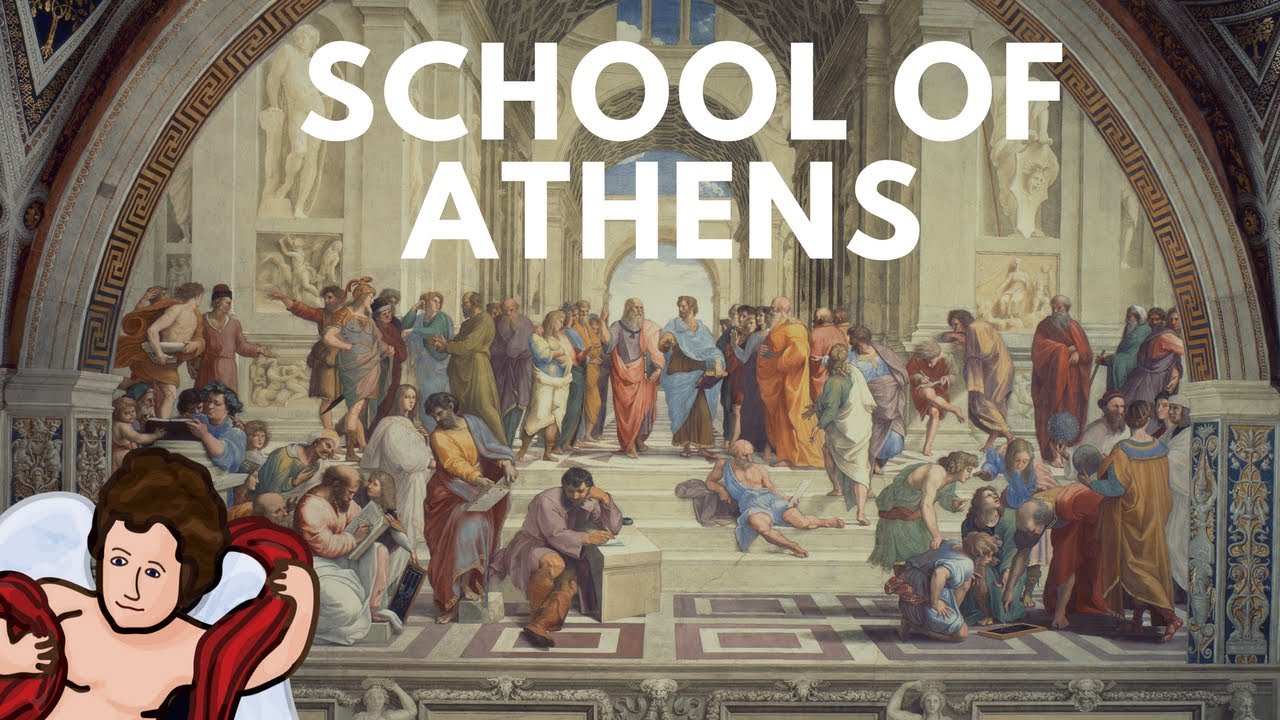
Robert Draws – The School of Athens is one of Raphael’s most celebrated frescoes. Created between 1509 and 1511, this masterpiece resides in the Vatican’s Stanza della Segnatura. It showcases the intellectual spirit of the Renaissance, bridging art, philosophy, and classical antiquity. Raphael’s work presents a harmonious gathering of great philosophers and scholars, each contributing to the foundation of Western thought. Through this painting, Raphael not only honors these intellectuals but also reflects the ideals of the Renaissance era.
The School of Athens is more than just a visual representation of philosophers. It symbolizes the intellectual renaissance that occurred in Italy during the early 16th century. The fresco reflects the deep appreciation for ancient Greek philosophy that was central to the Renaissance. Raphael’s choice to depict prominent figures like Plato, Aristotle, and Socrates highlights their enduring influence on Western philosophy.
In this fresco, the classical world comes alive. Raphael fills the scene with carefully chosen philosophers who represent different schools of thought. Each figure is shown engaged in dialogue or contemplation, demonstrating the intellectual rigor of their time. The composition is balanced and ordered, reflecting the intellectual harmony sought by the Renaissance thinkers.
“Read about: The Creation of Adam: Michelangelo’s Vision of God’s First Breath”
Raphael’s fresco features over 50 figures, each representing a famous philosopher, scientist, or mathematician from classical antiquity. The central figures of the painting are Plato and Aristotle. They stand at the heart of the scene, engaging in a discussion about the nature of reality. Plato appears as an older man, pointing upward to convey his belief in the higher, ideal world of forms. Aristotle, in contrast, gestures outward, emphasizing his focus on the empirical world.
Other notable philosophers surround these two central figures, such as Socrates, Pythagoras, and Euclid. Socrates engages in conversation with a group of students, while Pythagoras writes in a book, symbolizing his contributions to mathematics. Euclid, the ancient Greek mathematician, teaches geometry, with several of his students depicted working with geometric shapes.
Raphael also includes himself in the painting, standing in the background. His inclusion nods to his role as an artist and intellectual, positioning himself alongside these towering figures of history.
Raphael’s artistic mastery is evident in the meticulous details of The School of Athens. The perspective used in the painting is one of its most striking features. The architecture of the building creates a sense of depth, with the vanishing point leading directly to the figures of Plato and Aristotle. This technique enhances the three-dimensional feel of the scene and brings a sense of space to the otherwise flat surface of the wall.
The use of light and shadow is also expertly executed. Raphael’s skill in creating depth and volume through shading gives the figures a realistic appearance. The figures’ clothing is rendered with incredible attention to detail, capturing the textures and folds of the fabric. This attention to detail is part of what makes the fresco a true masterpiece of Renaissance art.
The School of Athens is a testament to the close relationship between philosophy and art during the Renaissance. The painting reflects the Renaissance ideals of humanism, which emphasized the importance of classical knowledge and the potential of human reason. Artists like Raphael sought to revive the study of ancient texts and combine them with contemporary knowledge.
The fresco is also a visual expression of the Renaissance’s focus on individualism. Each philosopher in the painting is depicted with distinct facial expressions and gestures, showcasing their unique contributions to human thought. This approach reflects the Renaissance belief in the value of individual intellect and creativity.
The impact of The School of Athens extends beyond its immediate time. This fresco has influenced countless artists, scholars, and thinkers throughout history. Its combination of art and philosophy serves as a model for the integration of intellectual and artistic pursuits. The fresco also contributed to the development of Renaissance art, pushing the boundaries of perspective, composition, and realism.
Today, The School of Athens is considered a cornerstone of Western art history. It remains a key example of the Renaissance’s dedication to reviving the ideals of classical antiquity while advancing the intellectual and artistic achievements of the period. Raphael’s masterpiece continues to inspire admiration and reflection on the power of art to convey profound ideas.